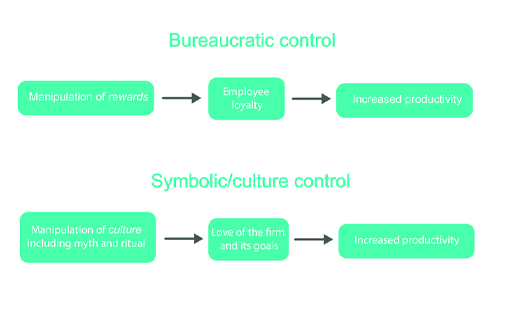1.2 Organizational culture act as a mechanism of control
Organisational culture acts a mechanism for shaping attitudes and values which ‘fit’ with the espoused ideals of an organisation (Knights & Willmott, 2012). For example, there may be particular rhetoric or discourses around ‘work hard, play hard’, or the organisation may invoke the metaphor of being ‘one big happy family’ (Gabriel, 1999) – so, following this logic if you aren’t happy then it is probably ‘your fault’.
Knights and Willmott (2012) suggest that one outcome of management’s preoccupation with the concept of culture might be as a means of controlling employees. More specifically, cultural control is one form of management control. It represents a managerial desire to enlist workers’ cooperation, compliance, and commitment to create an esprit de corps with which to limit human recalcitrance at work. The rhetoric of control, coupled with a new vocabulary of teamwork, quality, flexibility, and learning organizations, constitutes culture management projects that seek to create culture as a mechanism of soft domination (Clegg, Kornberger & Pitsis, 2016).
Figure 5 below shows how the mechanisms of control in some organisations have moved from bureaucratic to cultural techniques. Although the techniques are different, the outcome is the same, but merely reproduced in a manner that is more subtle and implicit rather than explicit.
Cunliffe and Luhman (2013) go so far as to suggest that such contemporary culture management is a form of social engineering – a large scale influencing of groups of people. Attempts to manage organisational culture are not just about telling or showing employees what they are expected to conform to, but also about shaping their hearts, minds and souls; and in the case of workplace health programs, it can also be about shaping their bodies (Zoller, 2003). Hence employees come to embody the organisational cultural ideals (James & Zoller, 2018), sometimes through intrusive practices.

